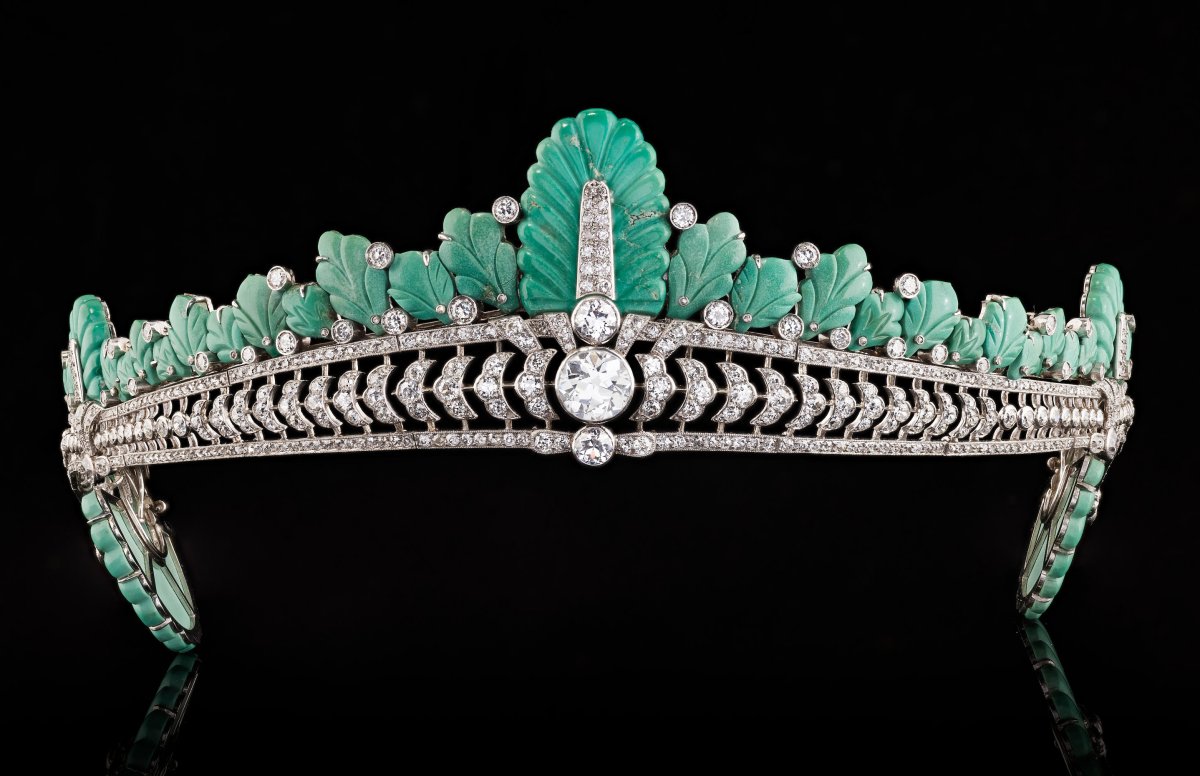
This spring’s gala jewelry auction season is shaping up to be a very interesting one, with numerous pieces of important jewelry linked to royals and aristocrats offered at auction. Among these is an unusual Cartier tiara that belonged to Lady Astor, the groundbreaking and controversial socialite and politician.

The tiara, which features a central diamond bandeau surrounded by carved turquoise accents, was made in two stages. The diamond bandeau itself was made around 1915, and is described as “composed of crescent-shaped, bow and quatrefoil motifs with pierced and knifewire detail, millegrain-set throughout with old brilliant, single, and rose-cut diamonds, a principal old brilliant-cut diamond at the centre.” That central diamond weighs around three carats.
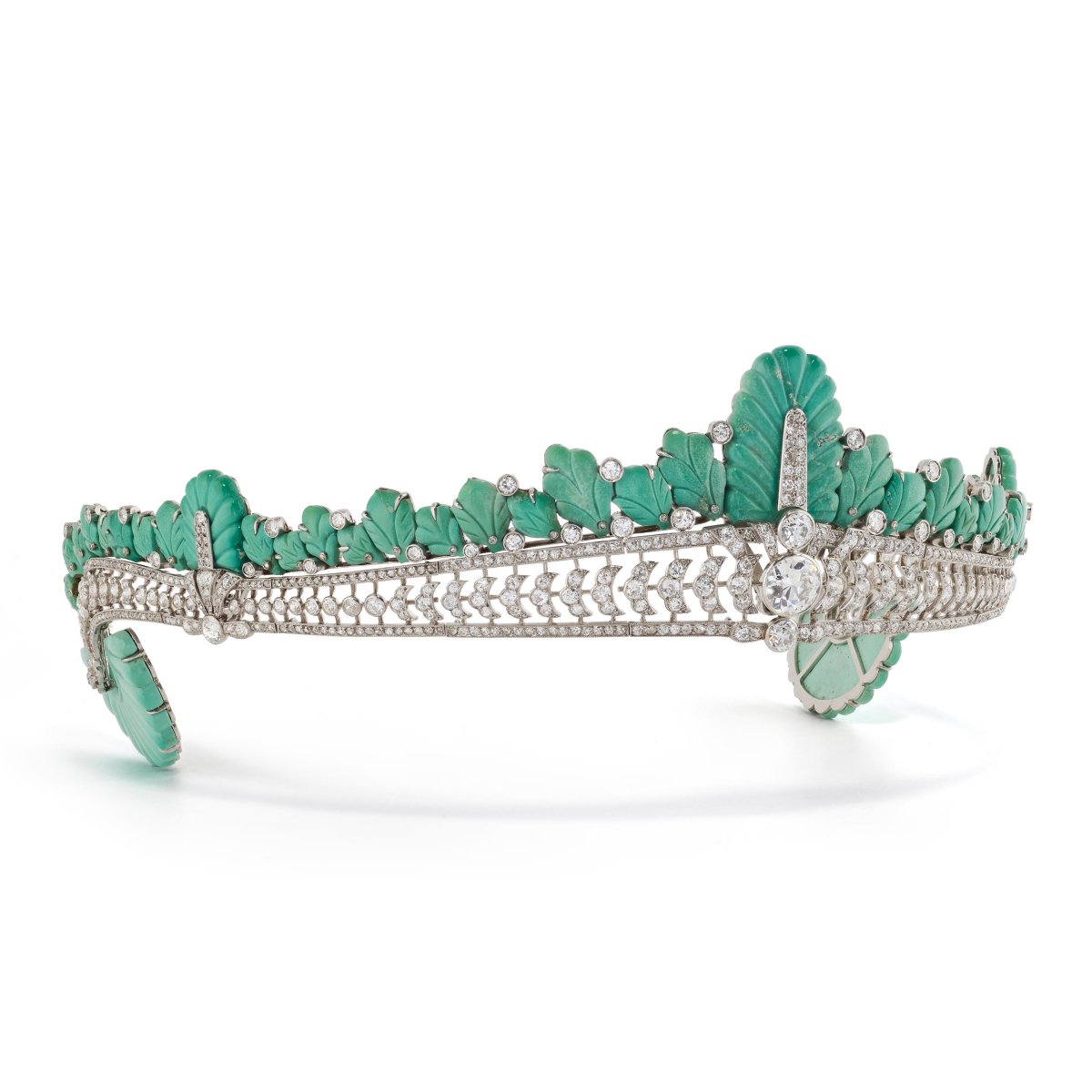
In 1930, the tiara was revised to incorporate a series of carved turquoise pieces. Two of the prevailing design influences of the era—the Art Deco design style and motifs popular in traditional Indian jewels—are both evident in the second version of the tiara. The new turquoise and diamond sections are described as “three fluted turquoise plumes with brilliant and single-cut diamond stems, between a series of carved turquoise leaves, interspersed with old brilliant-cut diamond highlights and studded with rose-cut diamonds, each end terminating with a fluted turquoise panel of radiating fan-shaped form.”
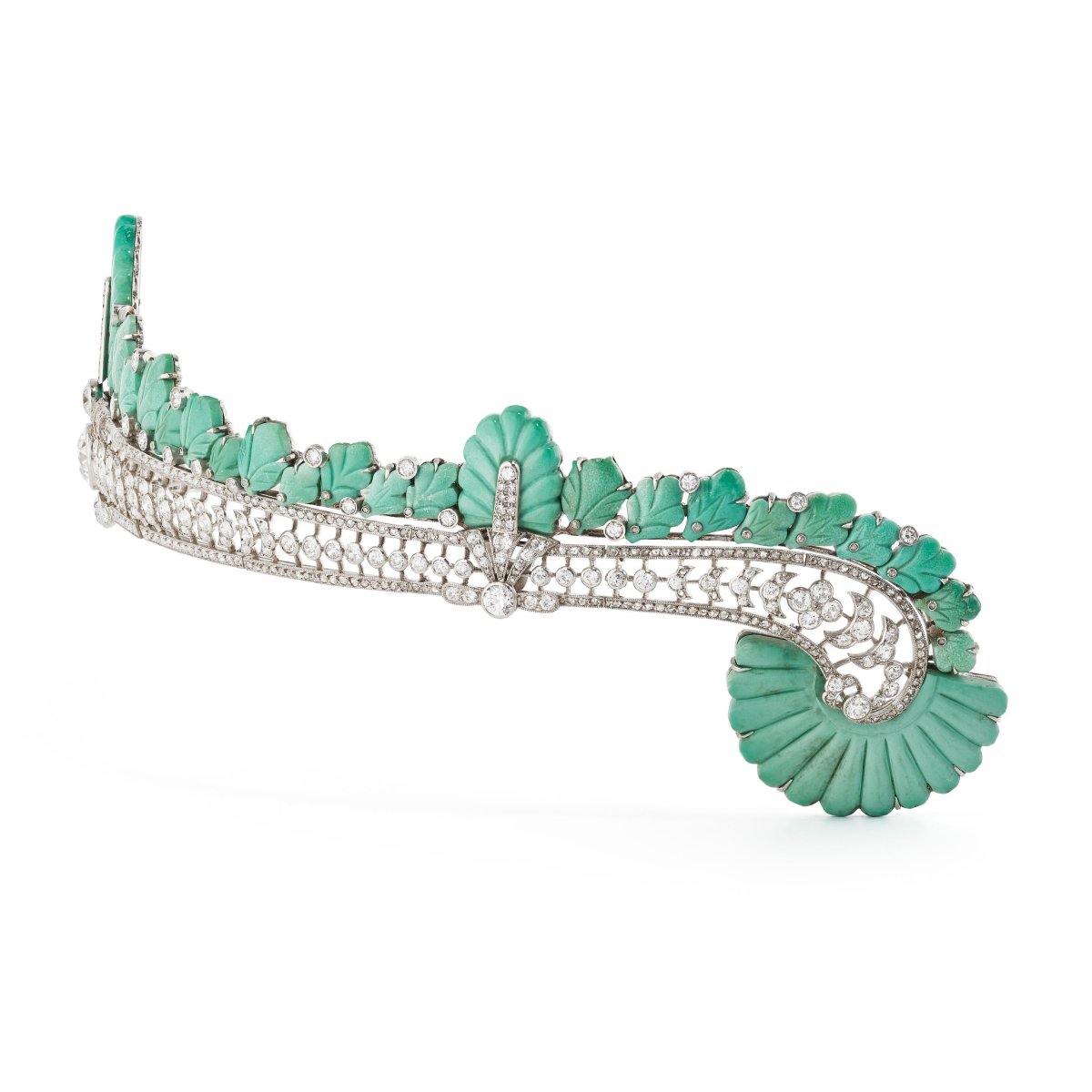
Here’s a good view of the side of the tiara, showing the way that it curves behind the wearer’s ears. The original bandeau featured these curved ends, but the carved turquoises added fifteen years later really accent the rounded ends of the piece.
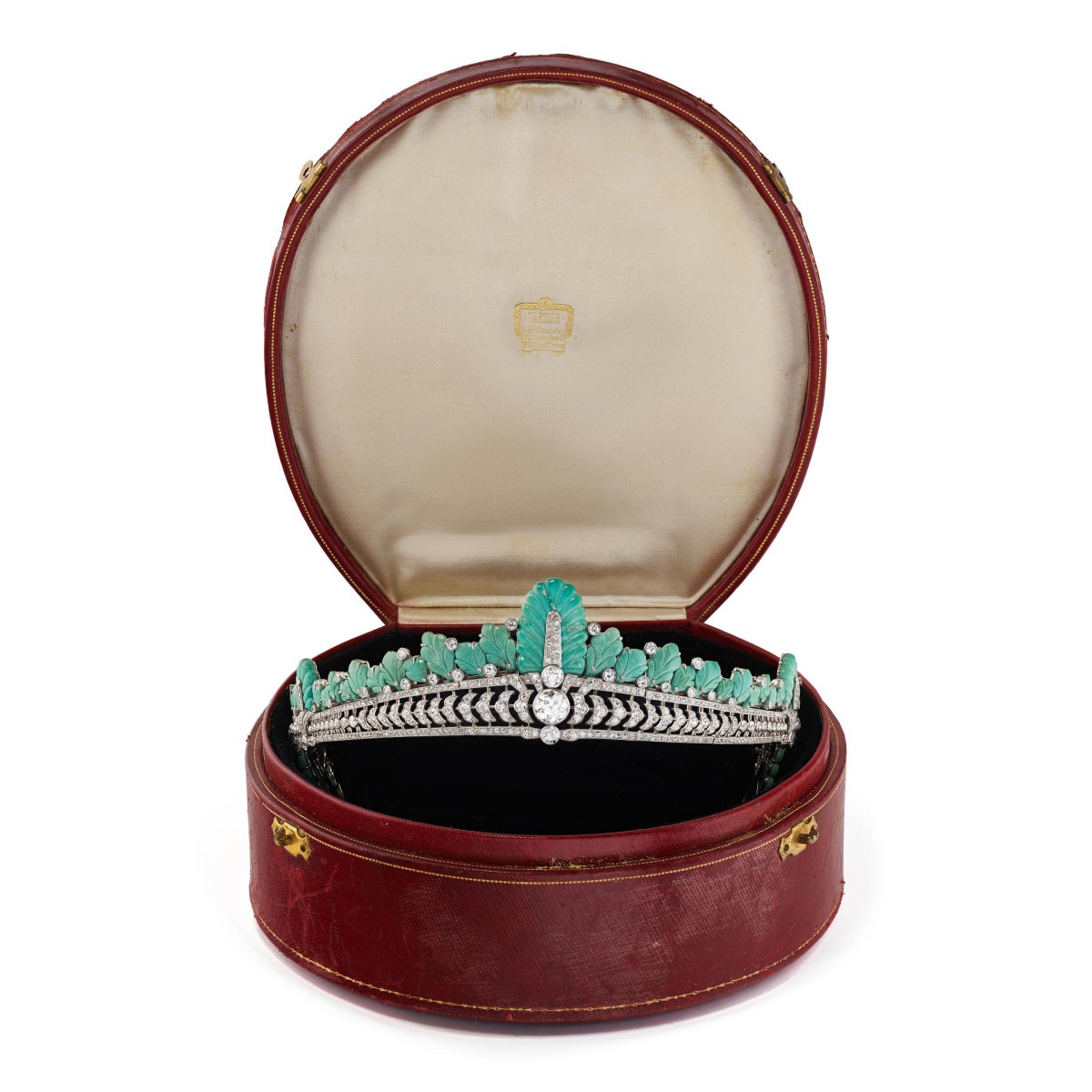
The turquoise version of the tiara was made by Cartier, though the bandeau itself seems to have come from a different source. It was packed into one of Cartier’s signature red boxes when it was purchased from the firm in 1930 by the American born Waldorf Astor, 2nd Viscount Astor for his wife, Nancy Langhorne Astor.
The Astors, though they were born in New York and Virginia, were a central part of British society by the 1930s. Lord Astor inherited his aristocratic title from his father, the famous businessman and hotelier William Waldorf Astor, in 1919. The second Lord Astor had been raised primarily in Britain and educated at Eton and Oxford. He was elected to Parliament in 1910 and later became publisher of The Observer.
In 1906, Astor married Nancy Langhorne, the former wife of the Gilded Age socialite Robert Gould Shaw II. Nancy, who was born in Virginia, had moved to England after her early divorce. She met Astor and married him in 1906. They raised a large family at their estate, Cliveden, in Buckinghamshire. But she had more public career aspirations, too. In 1919 she was elected to Parliament and became the first female MP to be seated in the legislative body. Through the 1920s, she was popular, and accomplished legislative goals connected to women’s rights and education reforms. But as the years passed, her radical, offensive personal views, including antisemitism, led other members of her party to compel her to retire. Her marriage struggled, too, as Lord Astor suffered heart problems, and their political philosophies became more and more divergent.
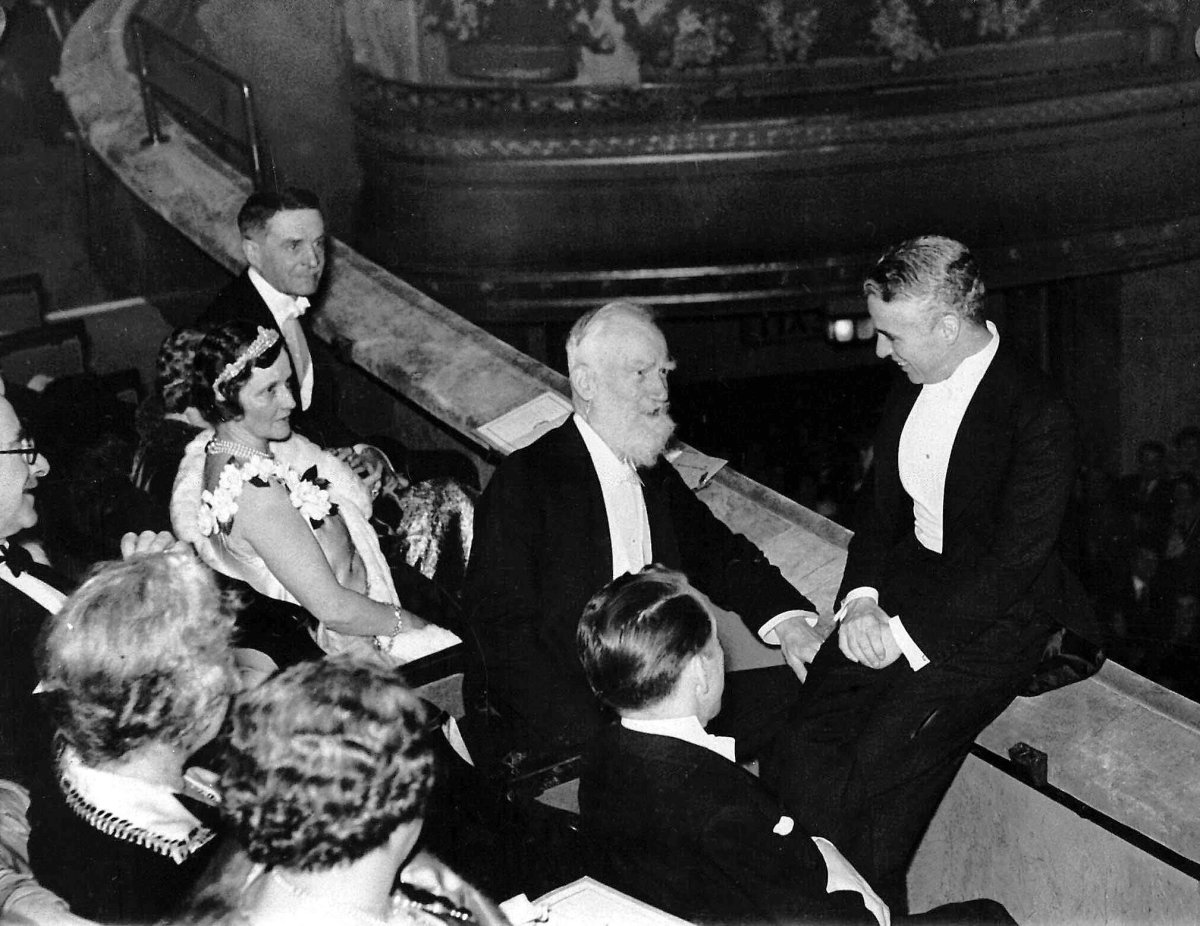
Through the 1930s, Lady Astor maintained an unlikely friendship with the playwright and critic George Bernard Shaw, though they held very different political views. After Lord Astor bought the turquoise tiara for his wife, one of her early public appearances in the jewel came during a film screening, during which she was seated between Shaw and her husband. The occasion was the London premiere of Charlie Chaplin’s City Lights, held at the Dominion Theatre in London’s West End. A notable photograph from the premiere shows Chaplin chatting with the Astors, Bernard Shaw, and Ishbel MacDonald (daughter of the sitting Prime Minister, Ramsay MacDonald) in the theater balcony during the event.
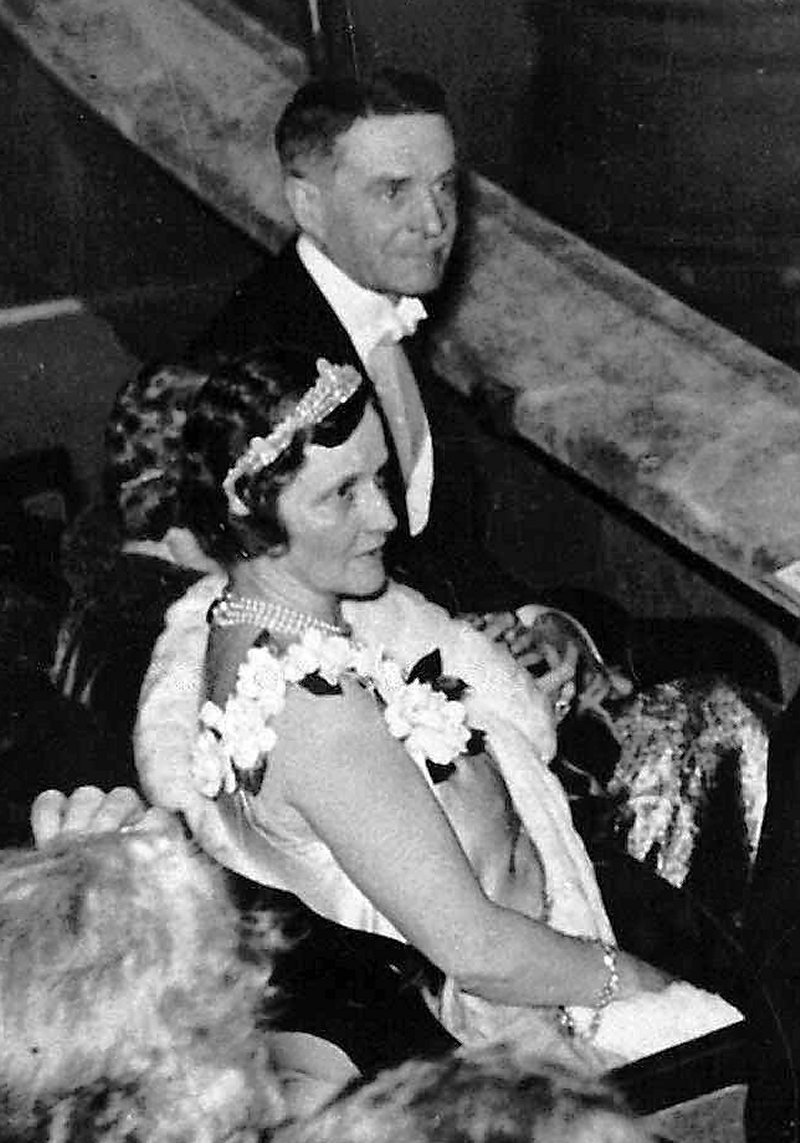
The photograph offers a glimpse into the way that the bandeau-style tiara was worn. The piece is perched atop Lady Astor’s finger wave hairstyle, with the ends of the tiara curving behind her ears. With the tiara, she wears a four row pearl necklace and an evening gown with a flower-festooned strap.
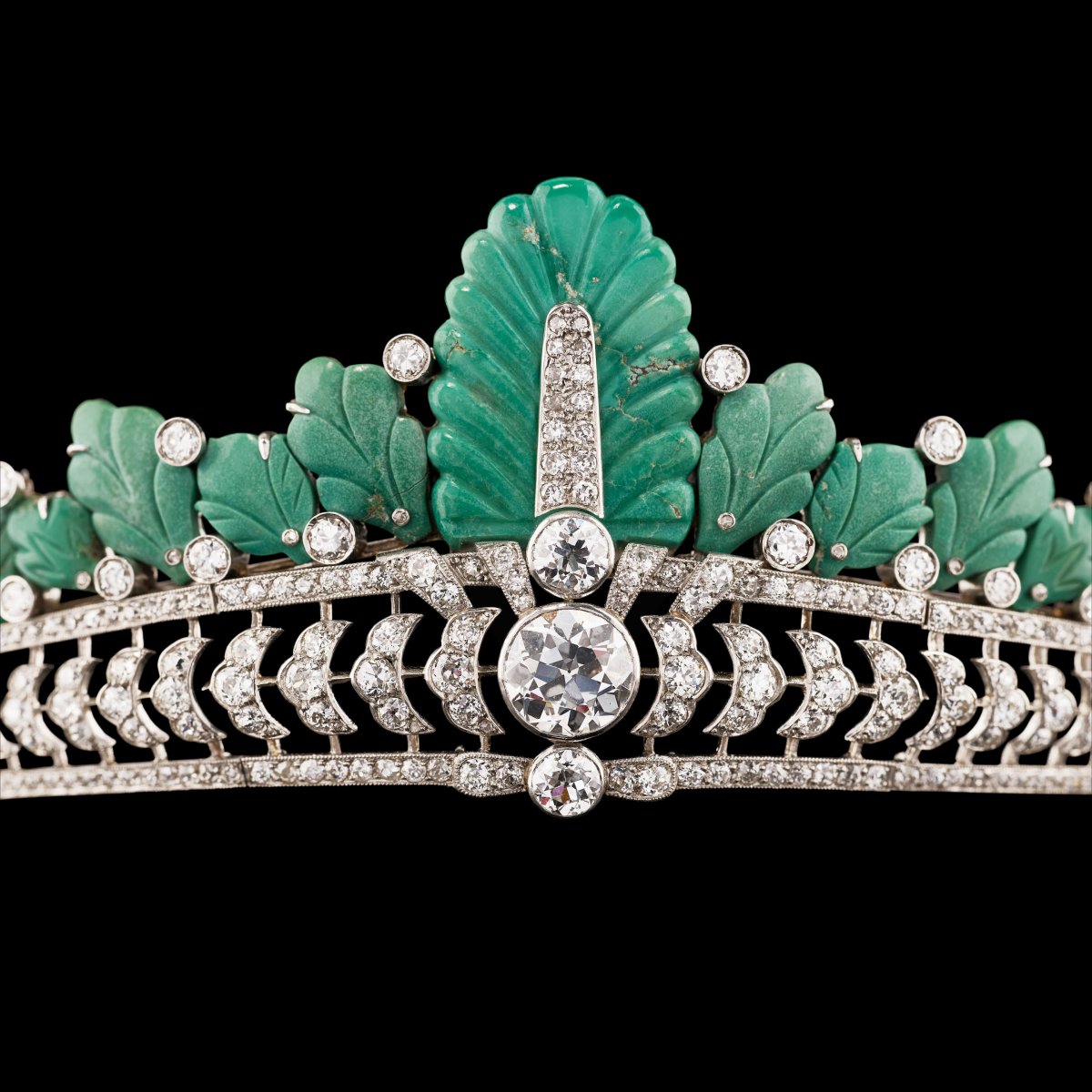
On at least one occasion, Nancy loaned the tiara to her sister, Phyllis Brand, who liked it so much that her husband decided to have a similar piece made by Cartier in 1935 for Phyllis’s own jewelry collection. The Brand tiara, which was later reacquired by Cartier, is currently on display at the Victoria & Albert Museum in London as part of the Cartier exhibition there, with high quality photographs also available in the book accompanying the exhibition.
As for Lady Astor’s tiara, it was inherited by one of her many descendants, who include the present Viscount Astor and the present Duchess of Richmond. On June 5, it will be sold at auction by Bonhams in London, with an auction estimate of £250,000-£350,000 (or $330,000-$460,000 USD). It’s a major anticipated sale price for a tiara of this size and design, and there’s clearly an expectation that the names Cartier and Astor will bring lots of attention to the piece. But will Nancy Astor’s complicated (and often downright offensive) political statements have an effect on the result? We’ll all see in just a few weeks’ time.
Leave a Reply
You must be logged in to post a comment.